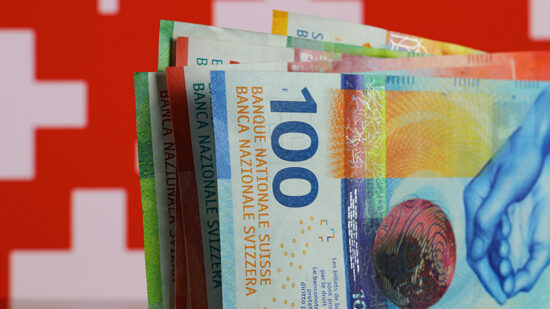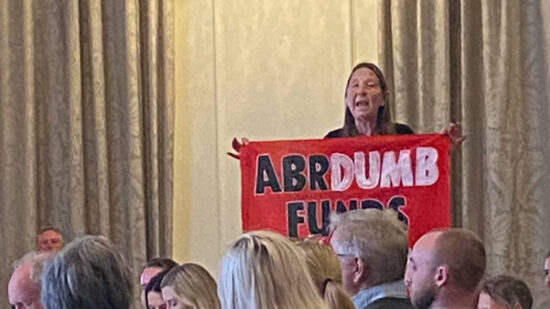The economic cycle is progressing unusually rapidly and over the coming period it will morph from the recovery phase into the mid-cycle phase. This is the view of Patrick Moonen, principal strategist at NN Investment Partners.
He explains that this is not necessarily negative for risky assets but it warrants a more balanced approach – one that moves away from pure cyclical growth exposure towards stable growth.
Moonen says that, earlier this year, he preferred cyclically sensitive assets in his allocation, which was reflected in an overweight in equities and an underweight in government bonds.
“The prevailing environment at the time fully justified this stance. First and foremost was the continuing fiscal response to the pandemic crisis. Vast, ambitious economic plans were being presented in the US, and the European recovery fund became operational, allocating money to investment projects in member states.
He adds: “Secondly, the vaccination programmes gained further traction in the Western economies. The normalisation of the economy is well under way in the Western hemisphere. A third factor was monetary policy support, and finally, the corporate side showed its robustness. Analysts continue to revise earnings estimates upwards.”
Risky assets like equities, real estate, commodities and high yield bonds have all performed very well in this environment. Safe government bonds, on the other hand, have printed negative returns.
What’s in store?
With all this good news out and largely priced in, the obvious question is – what’s next?
“The market has become less straightforward in its preferences,” Moonen says. “The rise in bond yields has come to a pause. We witnessed a rotation from value into growth stocks, and overall the pace of progress in equities has moderated”.
He argues that the environment is changing. Inflation is surprising to the upside and the US Federal Reserve has made a hawkish pivot. Earnings growth will no longer accelerate.
“Overall, we believe that central banks in developed markets will remain accommodative, even in the wake of these rising inflation numbers. They are the result of soaring commodity prices, base effects and supply disruptions, all elements which are temporary, in our view. The Fed’s hawkish pivot was surprising, but can be interpreted as a way to manage inflation expectations.”
Returning to the initial premise that we are moving from the recovery phase into the mid-cycle phase demanding a more balanced approach (from pure cyclical to stable growth), how is this reflected in NN IP’s asset allocation?
“We scaled back top-down cyclical risk in our model portfolio during Q2. We reduced equites from a moderate overweight to neutral. In commodities we cut our exposure to oil. In the rates market, we maintain a moderate underweight in US Treasuries. On a longer-time horizon, Treasury yields are on a rising trend, given the strong macro data and the Fed’s likely next steps”.
Risk/reward trade off starting to deteriorate
The markets have witnessed an exceptionally strong run, Moonen explains, and the risk/reward trade-off has started to deteriorate.
“The Delta variant, peaking earnings and macro indicators, rising inflation numbers and a hawkish pivot at the Fed made the environment more uncertain. On the other hand, the risk premium is close to its global financial crisis lows, optimism is high and futures positioning has increased a lot”.
NN IP’s equity allocation remains tilted to benefit from the twin themes of rising bond yields and increasing commodity prices. At the same time, it has introduced more focus on secular growth by upgrading healthcare and communication services. From a regional perspective, it entered the third quarter with an overweight Eurozone equities and an underweight in emerging markets.
Nadege Dufosse head of cross-asset strategy at Candriam, sees things slightly differently to Moonen. She believes we will move from a very rapid mechanical rebound phase to a more traditional economic recovery phase.
However, she argues that we are not close to the mid-cycle but to the mid-recovery phase.
“The decline in interest rates led to an outperformance of growth styles in the second quarter. Investors have digested the violent rotation in favour of cyclicals and value seen since November 2020. The slowdown in Chinese growth and the rapid rise in the delta variant have probably helped to calm the risks of overheating. The Fed has also managed to reassure investors that it can adapt its monetary policy”.
So what does Dufosse expect for the second half of the year?
“A resumption of the rise in rates, particularly real rates. Our style approach is indeed more balanced today but we will continue to favour non-US equities in this phase and keep an exposure to value sectors such as the banking sector. A rise in real interest rates generally leads to an outperformance of assets with a shorter duration.”
She adds: “We are underweight bonds and have reduced the duration to enter this new phase of economic recovery. We keep our exposure to alternative strategies such as equity market neutral and systematic strategies. They offer an additional return while diversifying the risk”.
Value versus growth
Kasper Elmgreen, head of equities at Amundi, says that the rotation of value over growth can be explained by the inflection point in the cycle, reflecting higher growth and inflation expectations.
Since 2000, the dominant secular trend has been one of weak growth, disinflation – or low inflation – and even lower bond yields, which resulted in an extreme market bifurcation.
He argues that the valuation dispersion between growth and value stocks remains at historically wide levels even after the strong rebound, meaning that value has never been that cheap vìs-à-vìs growth.
“The market value segment usually benefits from an environment of inflation normalisation from low to higher levels as a result of improved macro and micro fundamentals. This is the situation where we are currently. Periods of low, but rising inflation tend to return pricing power to those sectors that have been losing it for years, as is happening with the post-covid-19 recovery, favouring the value segment”.
Elmgreen stresses that value performance has a historic link with inflation and the direction of bond yields. “We may transition from the current recovery regime into a mid-cycle or expansion regime, which could see yields move higher and inflation settle to a higher level than the pre-pandemic one.”
He concludes: “Such a scenario would continue to benefit value stocks, even as growth momentum slows. The drivers of this inflection point have not changed, but the valuation dispersion remains extreme, which gives confidence in the rotation continuing. However, such a rotation will not happen in a straight line and active stock picking will be key.”
For more on pan-European funds and investing, please visit expertinvestoreurope.com







